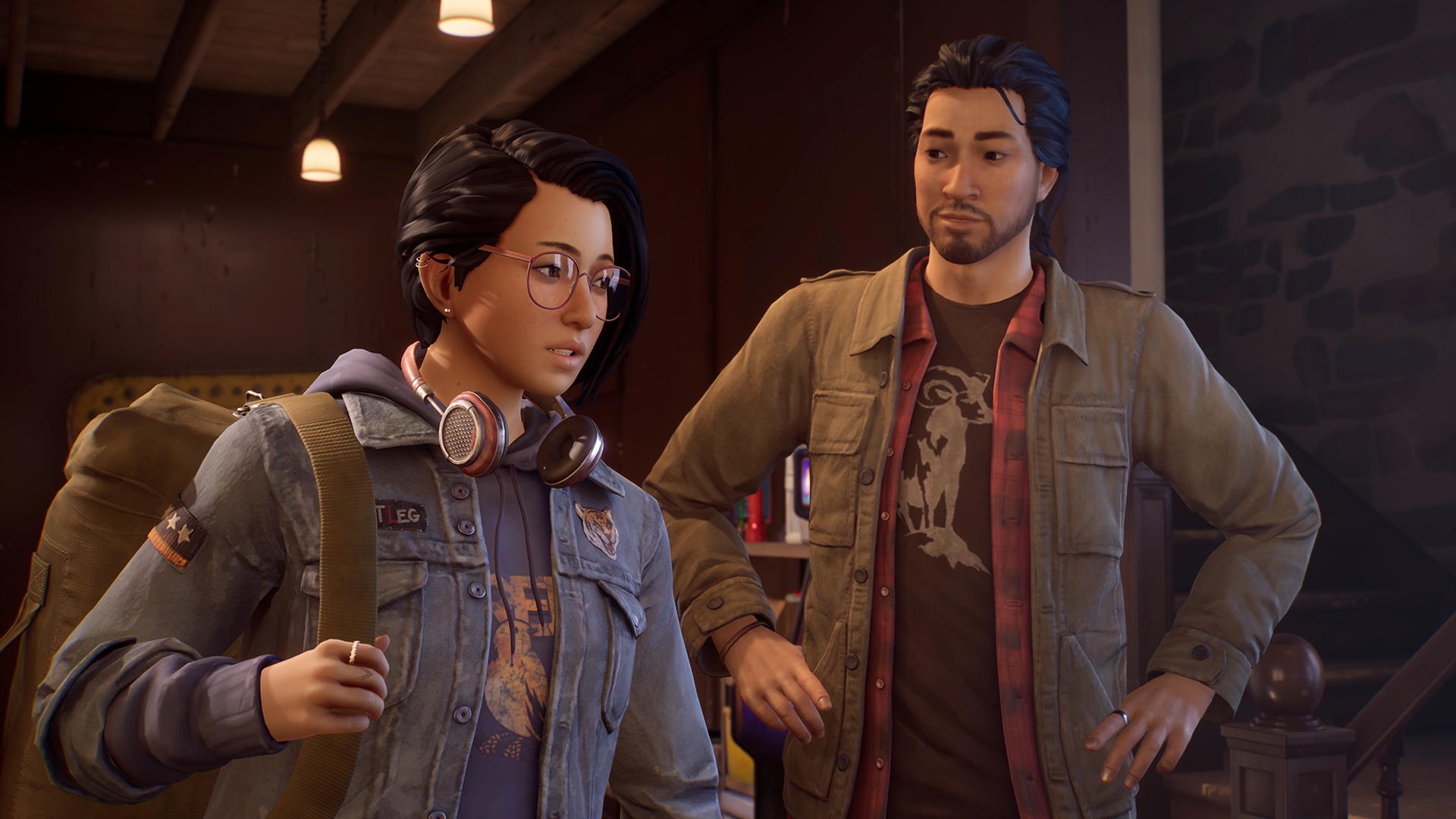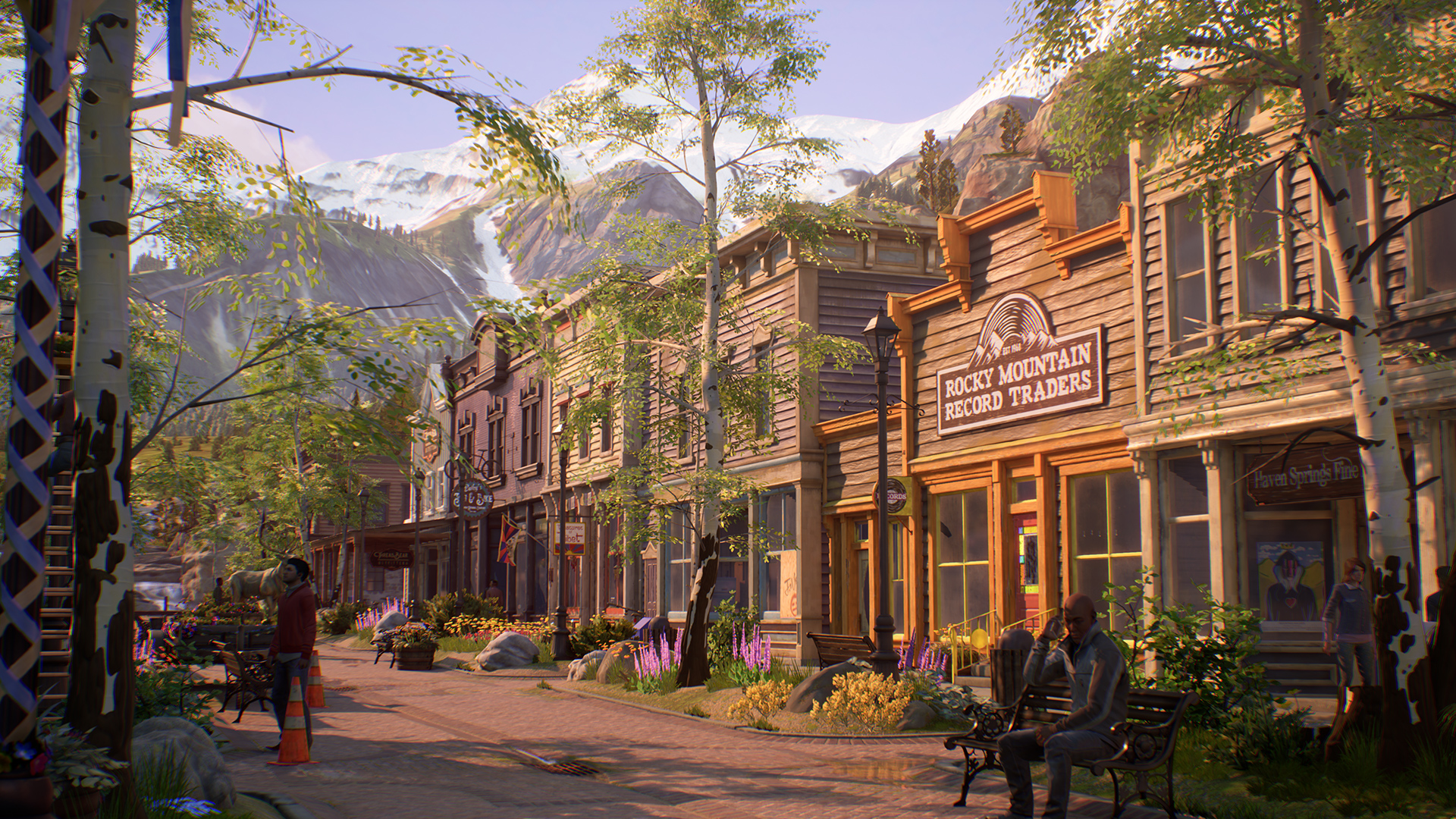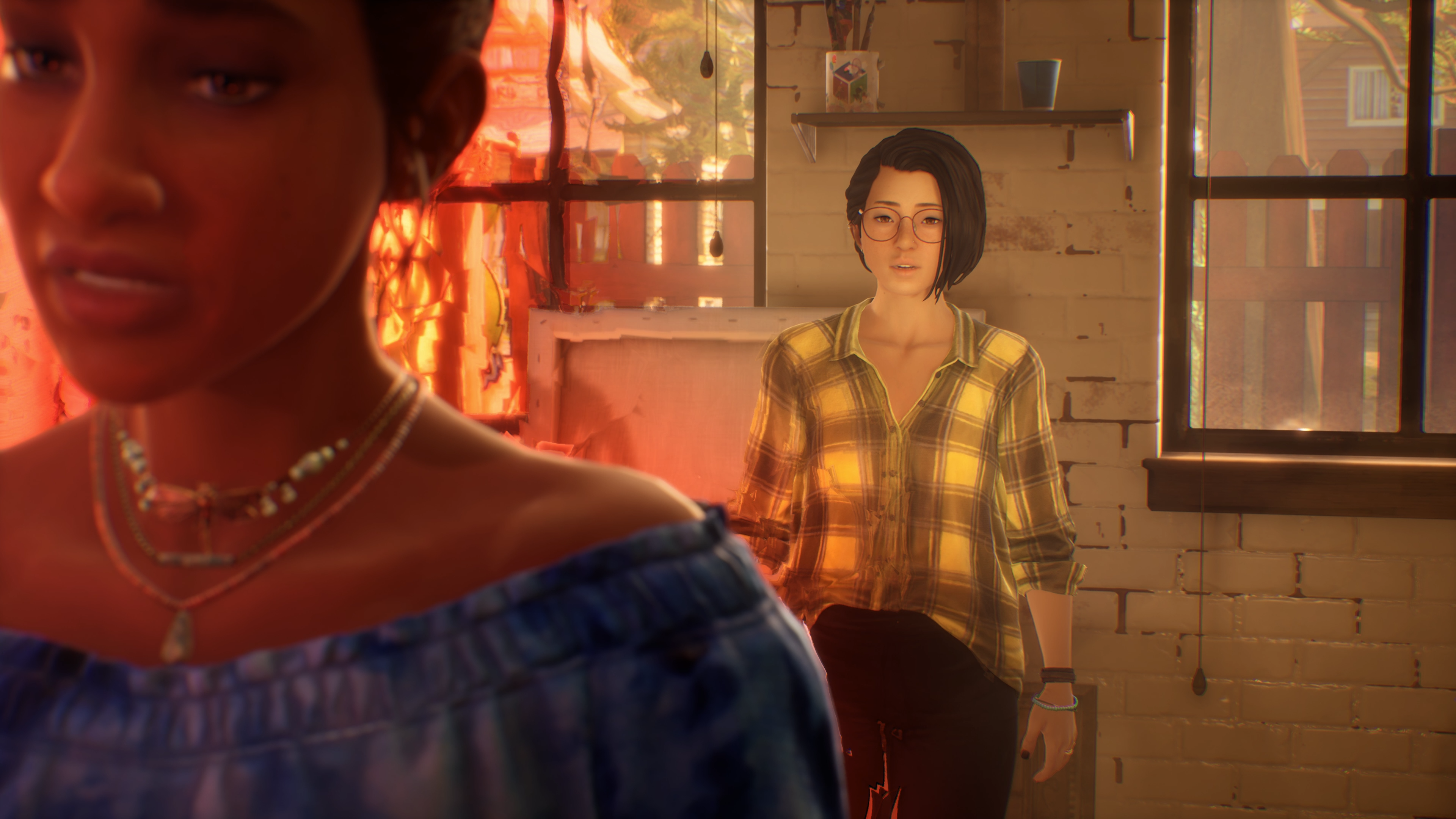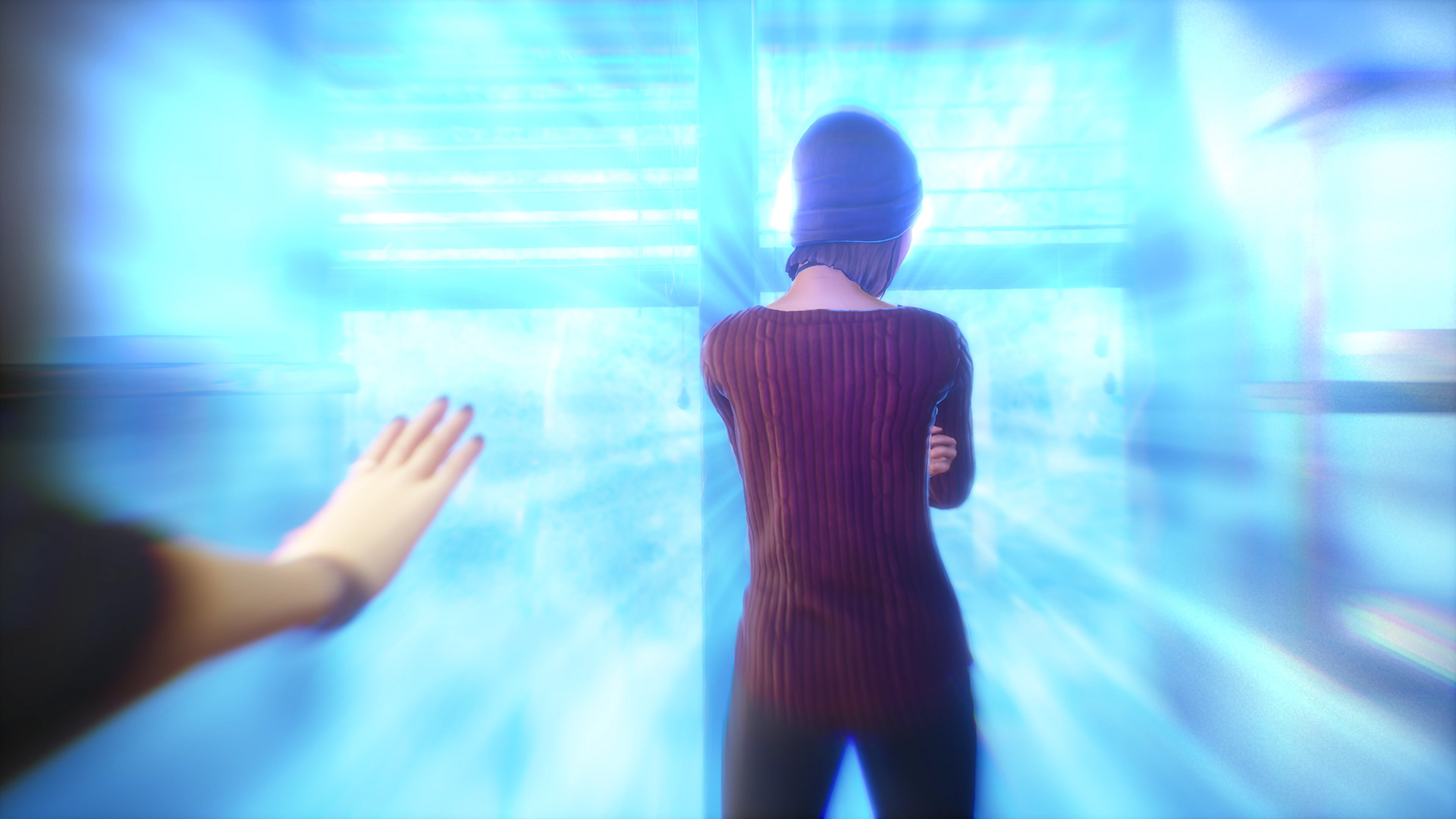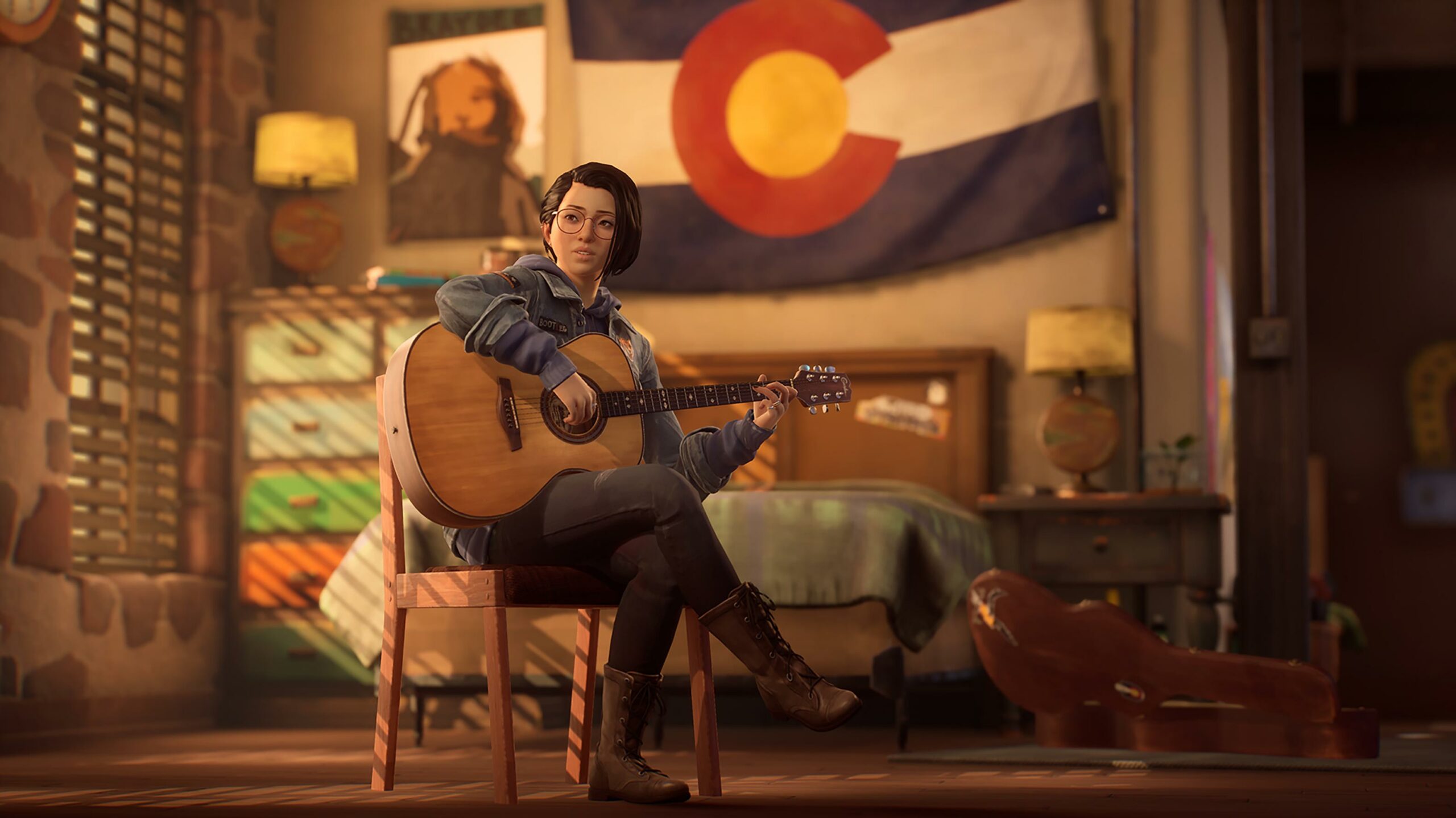
After finishing Life is Strange: True Colors, my first thought was that I wanted to play it again.
This is quite abnormal for me. Generally speaking, I prefer to move onto games I’ve never played before, and even choice-driven experiences like the previous Life is Strange games rarely entice me to come back due to minimal differences between the story outcomes.
But I found myself so deeply enamoured with what developer Deck Nine has created with True Colors that I didn’t want it to end. Instead, I actually had a burning desire to replay it and go down the many roads not taken. Between splendid writing and acting, a wonderfully realized setting and a deeply affecting narrative with a surprising amount of branches, True Colors proves itself to be not only the best Life is Strange, but one of 2021’s top games.
A new beginning
Of course, Deck Nine owes much to the template laid out by original Life is Strange developer Dontnod. The central idea of an emotional coming-of-age adventure game focused on someone with supernatural abilities is retained here — in this case, a young Asian-American woman named Alex Chen. But where the first Life is Strange featured time travel and its sequel focused on telekinetic abilities, True Colors is all about a much more understated power — psychic empathy, or the ability to experience the emotions of other people.
“Much of True Colors’ success can be attributed to Alex, who quickly became one of my favourite main characters in recent memory.”
The decision to centre Alex’s character around this particular ability gives True Colors a comparatively more grounded feel, which is refreshing for the series. But it also creates some genuinely heartwrenching character drama. If years of going through the foster care system weren’t difficult enough, Alex’s empath abilities only further isolated her and brought on more pain, leading her to try to suppress them over time. Naturally, then, she jumps at the chance to start a new life with her long-lost brother Gabe in the small Colorado town of Haven. But their reunion is sadly cut short when a so-called accident results in Gabe’s untimely death, forcing Alex to use her powers to find out the truth and uncover Haven’s dark secrets.
Much of True Colors’ success can be attributed to Alex, who quickly became one of my favourite main characters in recent memory. Her troubled childhood makes her immensely sympathetic, no doubt, but it doesn’t define her. Indeed, what makes Alex so lovable is that she’s impressively resilient — she’s constantly trying to work through her trauma to help other people she meets. That Alex constantly uses her powers and risks reopening old wounds just to help other people is downright touching and even inspiring. All the while, her quiet demeanor hides a charmingly sarcastic and flirtatious side and endearingly deep passion for music. Overall, the arc that Alex undergoes over the course of the 15-hour story — a journey to finally discover not only a home and family, but her own sense of self-worth — is utterly gripping and beautifully realized by actress Erika Mori.
Adding to all of that is Deck Nine’s use of full facial and motion capture, a first for the series. It can’t be understated how much this enhances the overall experience — small moments like Alex blushing and awkwardly shrinking away while talking to a potential romantic interest or solemnly playing her guitar on her bed become much more lively and realistic, making it a wonder how the series has gotten by without this technology until now.
It also helps that Deck Nine wisely spends all of the first of True Colors‘ five episodes (which, mercifully, are released all at once this time around) on Alex and Gabe’s slow reconnection. During this time, the two share several tender moments together, including goofily rocking out to a new album or having a sentimental talk over some beers, and Mori and Gabe actor Han Soto bring these scenes to life incredibly well. Gabe’s an eminently likable and stand-up guy who’s simply looking out for his little sister, and it makes his death all the more tragic.
Deck Nine continues to develop the elder Chen even after his death through Haven, which it portrays as a friendly and welcoming community in which he became a beloved figure. Constant reminders to Gabe can be found throughout the town, such as a makeshift foosball trophy he earned from a friend or a plaque in the local bar, ensuring that his presence is constantly felt throughout the game. This also makes your inevitable sinister discoveries about Haven feel all the more shocking and impactful.
To that point, Haven is itself one of True Colors‘ leads, and it’s a compelling one, at that. Almost all of the game takes place there, which, in practice, is basically just a town square and adjacent park for you to explore. While this initially seems restrictive, I soon came to appreciate just how much of a sense of place this created. This familiarity gives the town and its inhabitants so much character. Whether it was old watering hole owned by the hardworking Jed, sweet elderly Eleanor’s cute little flower shop or the record store featuring the oh-so rad DJ Steph (who returns from Deck Nine’s underrated Life is Strange: Before the Storm), I found myself admiring Haven’s quaint layout.
At the same time, True Colors doesn’t shy away from the problems that the people of Haven are facing beneath their warm exteriors. In instances where you’re able to wander around Haven, you have the option of seeking out each of these characters. Doing so will regularly reveal all kinds of compelling subplots, like Eleanor struggling to balance her health problems with supporting her daughter’s university goals. While the colour-coded aura that surrounds characters to represent emotions like sadness and fear sometimes removes a bit of the subtlety, the uniformly strong writing and performances ensure that each character always feels sincere and human.
You can change the world, Alex
Deck Nine has also created some fascinating ideological dilemmas pertaining to Alex’s involvement. While some instances are straightforward (such as Alex leading a town-wide ‘LARP’ to raise a grieving kid’s spirits in perhaps the game’s most delightful sequence), others are decidedly more complicated. While you might mean well in using your powers to take away one woman’s overwhelming anger, that could be robbing her of the opportunity to heal in a meaningful way. While True Colors doesn’t fully explore this subject matter as much as I would have liked, what is in the game is still surprisingly effective.
“Deck Nine has easily proved itself to be a worthy successor to the Life is Strange franchise, and I can’t wait to see what unforgettable experience it creates next.”
In any event, it’s a significant step up from previous Life is Strange games, which often failed to flesh out some secondary characters. True Colors, by contrast, deftly balances its large ensemble cast and gives everyone plenty of moments to shine. In particular, none of the other games really featured memorable love interests, but True Colors offers up two equally great options in the aforementioned Steph and Jed’s son Ryan. Engaging with the supporting cast is made even more rewarding by the fact that your choices will result in different outcomes for each character who, in some cases, might even see them support you in unique ways towards the story’s end.
This is the biggest way that True Colors avoids much of the usual failings of the choice-based narrative game. While some of True Colors‘ plot-heavy decisions, unfortunately, don’t have nearly as much bearing as they should, how you choose to help characters actually does make a tangible difference via six commendably different endings.
In the end, the resolution to the individual stories of Alex and her friends are far more important than specific plot points, and in this regard, True Colors easily sticks the landing. So much so, in fact, that I often found myself thinking long and hard about certain choices. What would be most authentic to my Alex? How can I help people and bring about the least amount of pain? I appreciated that this wasn’t always easy to answer.
I see your true colors
In focusing on utterly human characters who are all treated with empathy, Deck Nine genuinely moved me with Life is Strange: True Colors. While some plot and thematic points could have been fleshed out a bit more, that’s easy to excuse when the central characters are so wonderful. It would have been easy to fall into either saccharine or melodrama territory, but True Colors almost always feels earnest, heartwarming and even profound. Deck Nine has easily proved itself to be a worthy successor to the Life is Strange franchise, and I can’t wait to see what unforgettable experience it creates next.
Life is Strange: True Colors is now available on PlayStation 4/5, Xbox One, Xbox Series X/S, PC and Google Stadia. A Nintendo Switch version is set to release later this year. A Steph-focused downloadable prequel episode called Wavelengths is set to release on September 30th.
Image credit: Square Enix
MobileSyrup may earn a commission from purchases made via our links, which helps fund the journalism we provide free on our website. These links do not influence our editorial content. Support us here.


